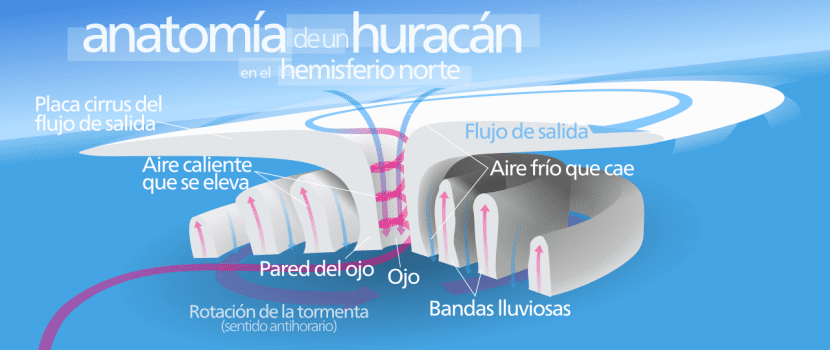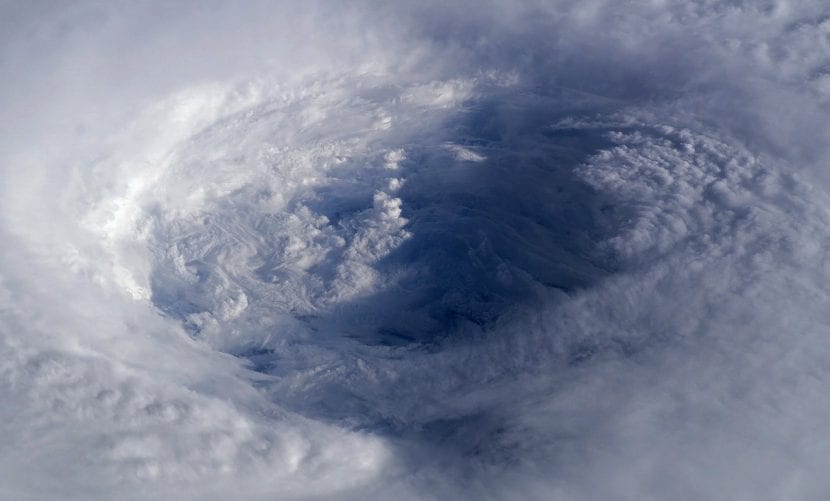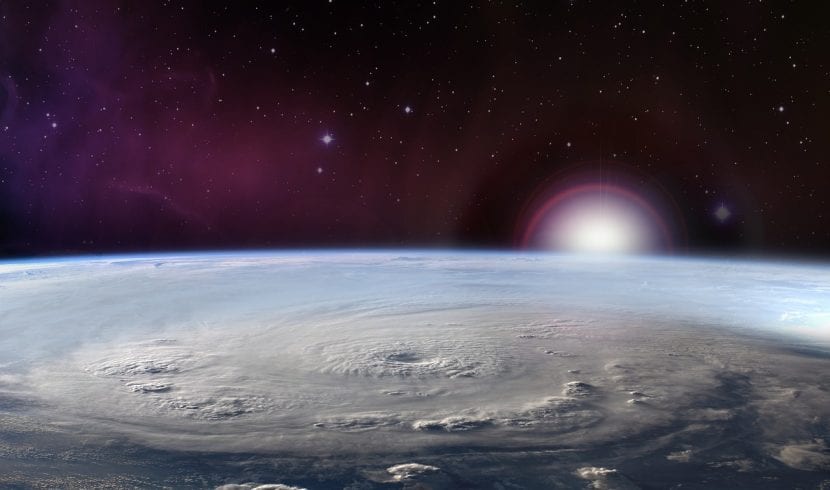
When there is a cyclone that is causing a lot of damage somewhere in the western Pacific, the word is repeated a lot typhoon, which often leads to confusion when in reality it should not be. This formation has the same characteristics as hurricanes that form in the Atlantic. In fact, they have only one difference: their place of training.
This means that they are meteorological phenomena capable of astonishing us and causing us real fear, depending on their intensity and where they are. But, What are they?
How is the typhoon formed?

Typhoons or hurricanes are tropical cyclones that form over the Atlantic and the Pacific, but only if the sea is very warm, with a temperature of at least 22 degrees Celsius. The warm and humid sea air rises causing an area of lower air pressure near the ocean. What happen? The wind, traveling in opposite directions, makes the storm begin to turn.
The air rises faster and faster filling the low pressure space, fed by the warm air from the sea surface. At the same time, it absorbs colder and drier air from the upper part, which is directed downwards. But this does not end here: while moving through the sea, the wind speed continues to increase as the typhoon's eye absorbs the warm air. At the center of the phenomenon the situation is relatively calm, and therefore the air pressure is very low.
Typhoon category
What is the Saffir-Simpson Scale?
The speed reached by the winds of these phenomena is classified according to the Saffir-Simpson hurricane scale. This scale was developed by the civil engineer Herbert Saffir and the director of the United States National Hurricane Center, Bob Simpson in 1969.
The original was developed by Saffir, who realized that there was no ideal scale to describe the effects of hurricanes. Thus, he invented a five-leveled one based on wind speed. Later, Simpson would add the effects of waves and floods.
In addition, as the tropical cyclone gains strength, it passes through two initial categories, which are the tropical depression and the tropical storm. Let's see how they differ:
- Tropical depression: it is an organized system of clouds and electrical storm that has a very defined circulation. The central pressure is> 980mbar, and the wind speed is from 0 to 62km / h. It can cause major flooding.
- Tropical storm: it is an organized system of very strong thunderstorms with a defined circulation. It has a cyclonic shape, and the central pressure is> 980mbar. The winds can blow between 63 and 117km / h, so they are capable of generating tornadoes.
Hurricane classification

If the cyclone gets even stronger, then it will begin to be called a hurricane or typhoon.
- Category 1: the central pressure is 980-994mbar, the wind speed is 74 to 95km / h, and waves are between 1,2 and 1,5m.
It causes coastal flooding, as well as damage to trees and shrubs, especially those that have been planted for a short time. - Category 2: the central pressure is 965-979mbar, the wind speed is 154 to 177km / h, and there are waves between 1,8 and 2,4m.
Damages roofs, doors, windows, and vegetation, as well as mobile homes. - Category 3: the central pressure is 945-964mbar, the wind speed is 178-209km / h and there are waves of 2,7 to 3,7 meters.
It causes damage to the coasts, where it destroys small buildings. There may be flooding inland. - 4 Category: the central pressure is 920-944mbar, the wind speed is 210 to 249km / h, and waves are between 4 and 5,5m.
It causes major damage to small buildings, beach erosion, and inland flooding. - Category 5: the central pressure is <920, the wind speed is more than 250km / h, and there are waves of more than 5,5m.
It causes serious damage to the coasts: floods, destruction of roofs, falling trees, landslides. Evacuation of residents may be necessary.
Are they beneficial?
Talking about tropical cyclones is always, or practically always, talking about phenomena that cause a lot of damage. But the truth is that without them, in some parts of the world they would have many problems.
Thus, the benefits are:
- They drag rains and winds, helping that dry areas are not so dry.
- They renew the forests. Sick and / or weak specimens do not withstand the passage of a typhoon, so when they are uprooted they leave room for a seed to germinate and grow.
- Fill dams and recharge aquifers so farmers can benefit.
- They help lower the temperature in the tropics which would otherwise be higher.

Typhoons are one of the most surprising weather phenomena, don't you think? I hope this article has been useful for you to know its characteristics and how they are classified.